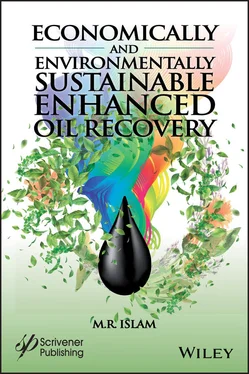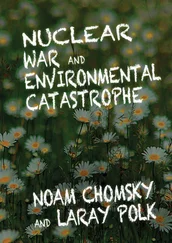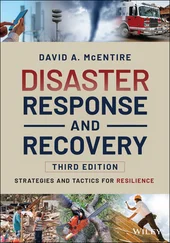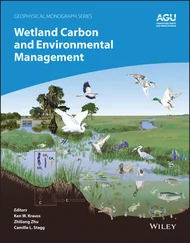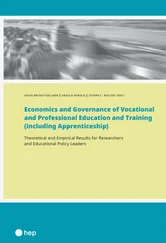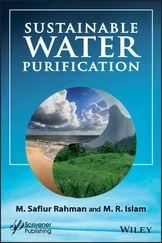2.3 Beginning of the Petroleum Culture
Captain Edwin L. Drake, a career railroad conductor who devised a way to drill a practical oil well, is usually credited to have drilled the first-ever oil well in Titusville, Pennsylvania in 1859. Curiously, initial “thirst” for oil was for seeking a replacement of natural oils (e.g. from whales) as a lubricating agent. Recall the need for such oil owing to a surge of mechanical devices in mid 1800s. Even if one discards the notion that petroleum was in use for thousands of years, there is credible evidence that the first well in modern age was drilled in Canada. Canadian, Charles Nelson Tripp, a foreman of a stove foundry, was the first in North America to have recovered commercial petroleum products. The drilling was completed in 1851 at Enniskillen Township, near Sarnia, in present-day Ontario, which was known as Canada West at that time. Soon after the “mysterious” “gum bed” was discovered, first oil company was incorporated in Canada through a parliamentary charter. Unlike Captain Drake’s project, this particular project was a refining endeavor in order to extract fuel from bitumen. Tripp became the president of this company on December 18, 1854. The charter empowered the company to explore for asphalt beds and oil and salt springs, and to manufacture oils, naphtha paints, burning fluids. Even though this company (International Mining and Manufacturing) was not a financial success, the petroleum products received an honorable mention for excellence at the Paris Universal Exhibition in 1855. Failure of the company can be attributed to several factors contributed to the downfall of the operation. Lack of roads in the area made the movement of machinery and equipment to the site extremely difficult. And after every heavy rain the area turned into a swamp and the gum beds made drainage extremely slow. This added to the difficulty of distributing finished products. It was at that time that need for processing petroleum products in order to make it more fluid surfaced.
In 1855, James Miller Williams took over the business of refining petroleum in Lambton County from Charles Nelson Tripp. At that time, it was a small operation, with 150 gallon/day asphalt production. Williams set out during a drought in September 1858 to dig a drinking water well down-slope from it but struck free oil instead, thereby becoming the first person to produce a commercial oil well in North America, one year before Edwin Drake. Also of significance the fact that he set up Canada’s first refinery of crude oil to produce kerosene, based on the laboratory work of Abraham Gesner. Interestingly, Gesner was a medical doctor by training (from London) but took special interest in geology. He is the one credited to have invented kerosene to take over the previous market, saturated with whale oil - a wholly natural product. It was this Gesner, who in 1850 created the Kerosene Gas Light Company and began installing lighting in the streets in Halifax and other cities. By 1854, he had expanded to the United States where he created the North American Kerosene Gas Light Company at Long Island, New York. Demand grew to where his company’s capacity to produce became a problem, but the discovery of petroleum, from which kerosene could be more easily produced, solved the supply problem. This was the first time in recorded history artificial processing technique was introduced in refining petroleum products. Gesner did not use the term “refined” but made fortune out of the sale of this artificial processing. In 1861, he published a book titled: A Practical Treatise on Coal, Petroleum and Other Distilled Oils, which became a standard reference in the field. As Gesner’s company was absorbed into the petroleum monopoly, Standard Oil, he returned to Halifax, where he was appointed a professor of natural history at Dalhousie University. It is this university that was founded on pirated money while other pirates continued to be hanged by the Royal Navy at Point Pleasant Park’s Black Rock Beach as late as 1844. 6
Going back to Williams story, his well, called Williams No. 1 well at Oil Springs, Ontario was the first commercial oil well in North America.
The Sarnia Observer and Lambton Advertiser, quoting from the Woodstock Sentinel, published on page two on August 5, 1858:
An important discovery has just been made in the Township of Enniskillen.
A short time since, a party, in digging a well at the edge of the bed of Bitumen, struck upon a vein of oil, which combining with the earth forms the Bitumen.
Some historians challenge Canada’s claim to North America’s first oil field, arguing that Pennsylvania’s famous Drake Well was the continent’s first. But there is evidence to support Williams, not least of which is that the Drake well did not come into production until August 28, 1859. The controversial point might be that Williams found oil above bedrock while “Colonel” Edwin Drake’s well located oil within a bedrock reservoir. History is not clear as to when Williams abandoned his Oil Springs refinery and transferred his operations to Hamilton. However, he was certainly operating there by 1860.
Historically, the ability of oil to flow freely has fascinated developers and at the same time ability of gas to leak and go out of control has intimidated them. Such fascination and intimidation continues today while nuclear electricity is considered to be benign while natural gas considered to be the source of global warming, all because it contains carbon - the very component nature needs for creating an organic product. Scientifically, however, the need for refining stems from the necessity of producing clean flame. Historically, Arabs were reportedly the first ones to use refined olive oil. They used exclusively natural chemicals in order to refine oil (Islam et al ., 2010). We have seen in the previous sections, the onset of unsustainable technologies is marked by the introduction of electricity and other inventions of the plastic era.
For its part, natural gas seeps in Ontario County, New York were first reported in 1669 by the French explorer, M. de La Salle, and a French missionary, M. de Galinee, who were shown the springs by local Native Americans. This is the debut of natural gas industry in North America. Subsequently, William Hart, a local gunsmith, drilled the first commercial natural gas well in the United States in 1821 in Fredonia, Chautauqua County. He drilled a 27-foot deep well in an effort to get a larger flow of gas from a surface seepage of natural gas. This was the first well intentionally drilled to obtain natural gas. Hart built a simple gas meter and piped the natural gas to an innkeeper on the stagecoach route from Buffalo to Cleveland. Because there was no pipeline network in place, this gas was almost invariably used to light streets at night. However, in late 1800s, electric lamps were beginning to be used for lighting streets. This led to gas producers scrambling for alternate market. Shallow natural gas wells were soon drilled throughout the Chautauqua County shale belt. This natural gas was transported to businesses and street lights in Fredonia at the cost of US$.50 a year for each light (Islam, 2014). In the mean time, in mid-1800s, Robert Bunsen invented the “Bunsen burner” that helped produce artificial flame by controlling air inflow in an open flame. This was significant because it helped producing intense heat and controlling the flame at the same time.
This led ways to develop usage of natural gas for both domestic and commercial use.
The original Hart gas well produced until 1858 and supplied enough natural gas for a grist mill and for lighting in four shops. By the 1880s, natural gas was being piped to towns for lighting and heat, and to supply energy for the drilling of oil wells. Natural gas production from sandstone reservoirs in the Medina formation was discovered in 1883 in Erie County. Medina production was discovered in Chautauqua County in 1886. By the early years of the twentieth century, Medina production was established in Cattaraugus, Genesee, and Ontario counties.
Читать дальше
